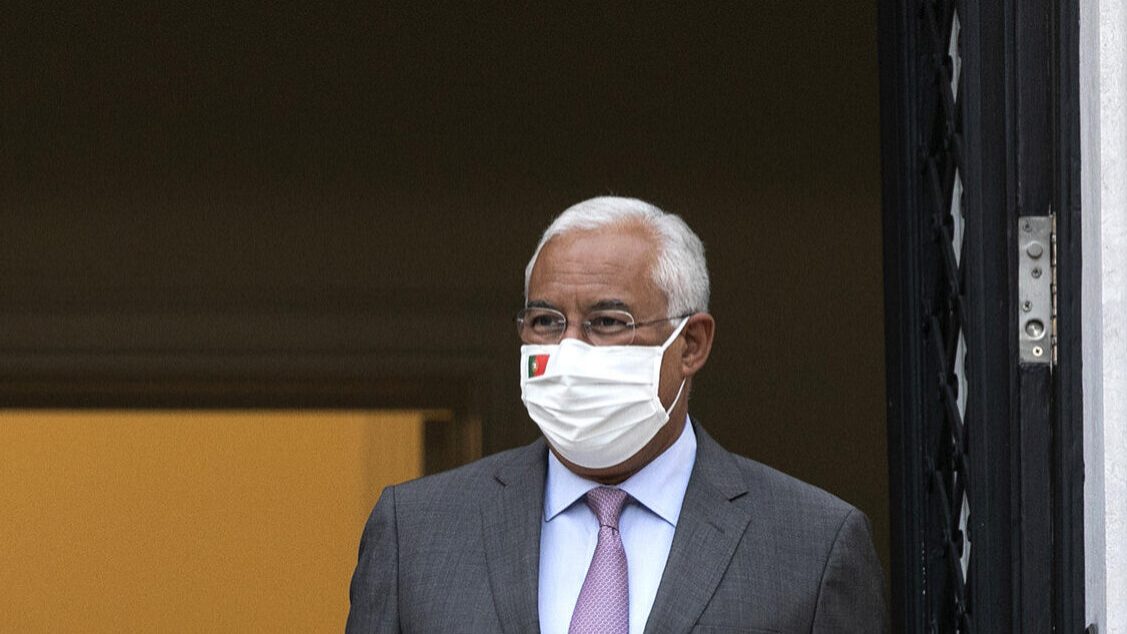New 2-week state of emergency starts today
The new period of emergency in Portugal began at 00:00 on Wednesday, with a total of 113 municipalities on the mainland at risk of extremely high or very high Covid-19 transmission.
The new period of emergency in Portugal, which runs until 23 December, began at 00:00 on Wednesday, with a total of 113 municipalities on the mainland at risk of extremely high or very high Covid-19 transmission.
Last Saturday, Prime Minister António Costa said that the government’s strategy was to maintain the system that was already in place until Christmas, and then reduce restrictions on parties a little.
In the case of Christmas and the New Year, the measures already announced will also be subject to evaluation on the 18th to confirm the trend of improvement of the Covid-19 pandemic.
By November, the government divided the continent’s 278 municipalities into four groups, depending on the level of transmission risk – moderate, high (between 240 and 480 cases per 100,000 inhabitants), very high (between 480 and 960) and extremely high (over 960). The lists are available at www.covid19estamoson.gov.pt.
In these two weeks starting today, until 23:59 on 23 December, there is no movement ban between municipalities throughout the mainland and tighter rules remain for extremely high (35 municipalities) and very high (78) risk territories, including the ban on public roads between 13:00 and 05:00 on weekends of 12 and 13 and 19 and 20.
On these days, shops can only operate between 08:00 and 13:00. Restaurants can operate after that time, but only for take-away and home deliveries.
Exceptions to the 13:00 closing time are food retail, as well as natural or dietetic, health and hygiene establishments with a sales or service area of 200 square metres or less, with independent entrance from the public highway.
On working days, the curfew in these 113 municipalities starts only at 23:00 and commercial establishments have to close by 22:00. Restaurants, cultural facilities and sports facilities must close by 10.30 p.m. (catering establishments may operate until 01.00, but only for home deliveries).
In municipalities with a high risk (now 92), the ban on driving on public roads is maintained until 23rd, with a curfew between 23:00 and 05:00 every day.
Commercial establishments have to close by 22:00. Restaurants, cultural facilities and sports facilities must close by 22:30 (catering establishments may operate until 01:00, but only for home deliveries).
Since eight municipalities in the Lisbon Metropolitan Area have now left the very high levels (Odivelas, Oeiras, Seixal, Setúbal, Sintra, Amadora, Cascais and Vila Franca de Xira), they will not have afternoon circulation restrictions for the next two weekends.
The same doe not apply to Almada, Barreiro, Lisbon and Loures, the only territories in the metropolitan area that continue with very high risk and therefore with greater restrictions.
In the Metropolitan Area of Porto, nine municipalities have fallen from extremely high risk to very high and the remaining eight are still at the most serious level, so in practice, there is no change from last fortnight.
The 73 municipalities with a moderate level of transmission continue to have no compulsory collection, but commercial establishments cannot open before 10:00, with the exception of hairdressers, barbers, beauty institutes, restaurants and the like, cafeterias, tea houses and the like, driving schools and vehicle technical inspection centres, as well as gyms and fitness centres.
In these cases, most shops close between 8:00 p.m. and 11:00 p.m., and the closing time, within this interval, may be set by the mayors, as may the opening time, subject to the favourable opinion of the local health authority and security forces.
In areas of moderate risk, restaurants must close at 01:00 (with new admissions until midnight) and their capacity is limited to 50%. Groups are limited to six people (unless they belong to the same household), except in establishments located up to 300 metres from a school and in food-courts in shopping centres, where they are limited to four people (if they are not from the same household).


